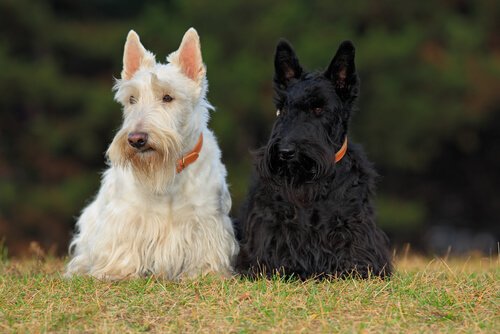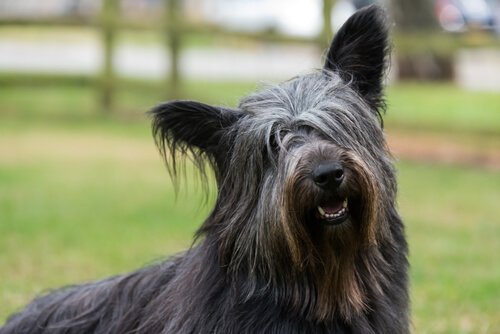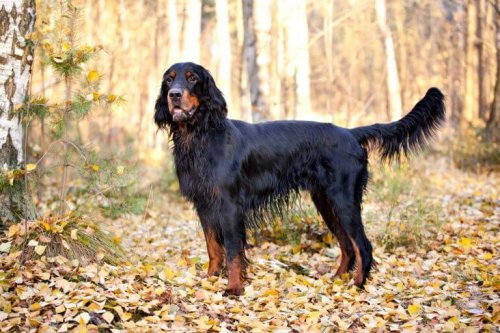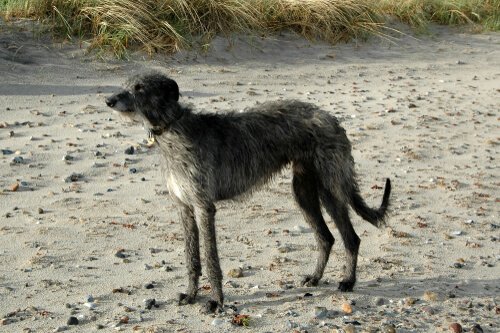Four Scottish Dog Breeds that You'll Love

Scotland is a beautiful country with a lot of history. Maybe that’s why it’s home to some very special dogs. In today’s article, we’ll be looking at four of these amazing Scottish dog breeds.
Scottish dog breeds: the Scottish Terrier
The Scottish Terrier is, without a doubt, one of the most recognizable breeds. At first, these dogs were used to dig into the ground in search of badgers or other animals.
These Scottish dogs are small, but they’re also extremely robust and muscular. They have very long snouts and a strong jaw. They usually have coarse, black fur, but there are some who have striped or lighter-colored fur.
Despite its size, the Scottish terrier can be quite temperamental. They may seem distant and independent with strangers, but they are known for being very close and faithful to those in their inner circle.
Skye terrier
This dog breed is originally from the Isle of Skye. This breed bears a strong resemblance to the Scottish terrier. So much so that, for a long time, they were thought to be the same dog. However, in 1870, it was discovered that they are actually two different breeds.

As you can see, the Skye Terrier stands out because of his elongated body and short, muscular extremities. Other characteristics of this breed are their strong snout and their ears that sometimes hang down. They have a long, two-layered coat. The other layer is rougher, while the internal one is softer.
His temperament is very similar to that of the Scottish terrier; he’s a hunting dog, so he’s fairly active. Therefore, it’s important to keep him busy and to make sure he gets enough walks. If you take proper care of him, he can live up to 11 years.
Gordon Setter, the most elegant of the Scottish dog breeds
This breed of Scottish dogs come from the Setter family, which also includes English Setters and Irish Setters. They were originally bred in Scotland in the seventeenth century.

These dogs have a dense, black coat and they also have brown spots on their legs, snout and eyes. They’re large animals; measuring about 24 inches and weighing varies between 55 and 65 pounds.
The Scottish setter is also a hunting dog with a great sense of smell. They’re great as pets, but you have to keep in mind that they need a lot of space and require regular exercise, since they’re very active.
Scottish hound, the fastest of them all
Our last dog is the Scottish hound from the Highlands. It has incredible eyesight and speed, which makes it the ideal dog for hunting deer.

This dog is like a special greyhound, since it has the characteristic tousled fur. This fur is an adaptation to the climatic conditions of the mountains that they originate from. They have a slender body and arched back. This breed can measure up to 32 inches tall, which gives you a good idea of how big they are.
This breed makes a great pet, as long as they stay in an optimal physical state. They’re not meant to live in small homes since they need a lot of space. However, if you can give him the right living conditions, he makes an ideal companion animal.
There are many other Scottish dog breeds too, and so you should try to learn about all of them!
All cited sources were thoroughly reviewed by our team to ensure their quality, reliability, currency, and validity. The bibliography of this article was considered reliable and of academic or scientific accuracy.
- Beauchamp, R.G. (1998). A new owner’s guide to Scottish terriers. T.F.H. Publications.
- Moon-Fanelli, A. A., & Dodman, N. H. (1998). Description and development of compulsive tail chasing in terriers and response to clomipramine treatment. Journal of the American Veterinary Medical Association, 212(8), 1252-1257.
